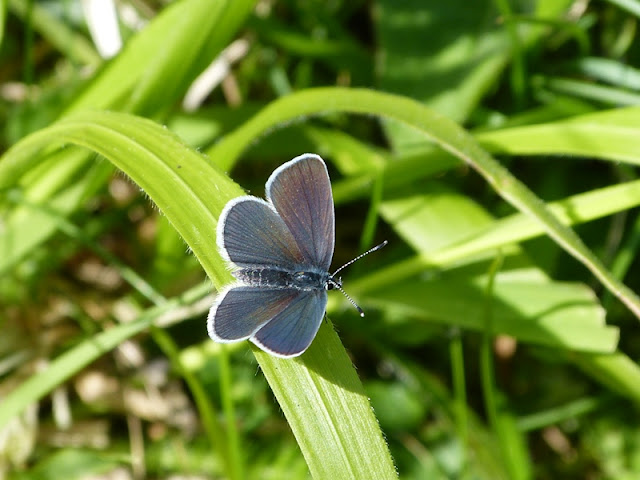I had a week off work this week, so on Tuesdays I nipped over to the Berwickshire coast to look for Small Blue butterflies. There are a few small colonies of these lovely little butterflies along the coastal slopes, where their food plant, Kidney Vetch, grows.
I visited a little earlier in the year than I have done previously, so there were fewer butterflies around, but I was delighted to find a few Small Blues all in lovely condition.
The Kidney Vetch wasn't very apparent this year and I assume it will grow quite quickly and come into flower, to provide somewhere for the butterflies to lay their eggs.
In addition to the Small Blues, there were some Green-veined Whites flying.
Also, two Wall Browns.
Although the Gorse provides lovely flowers, which an amazing scent, it can spread rapidly and smother the other vegetation in the area.





.jpg)
Hello Nick :=)
ReplyDeleteWhat a pleasant day out. Those blue butterflies are the same colour as sapphire gems. They are gems ! Photo three is stunning.The larger butterflies are always great to see but pale into significance compared to the Small Blues.
All the best.
Thank you Sonjia, I agree, I am always excited to see a blue or Lycaenidae. But I do also love seeing other species, such as Orange Tips, Ringlets and the lovely Grass Yellows in the tropics.
DeleteLovely butterfly images! when I read about the gorse my first thought was: it is a lot like humans. Lovely image of it also.
ReplyDeleteHi Tammie Lee. Yes, you are right. Some species just seem to do too well in some places to the detriment of others! However, I recently read that Gorse is like nature's tree tubes. It can grow up, protecting saplings from being eaten by deer or rabbits. Once the saplings grow up, the trees shade out the Gorse. However, I do think we need more open areas of wild flowers and grassland.
DeleteVery nice photos! I really miss the British coast and its meadows, I found them extremely interesting during my time in the North-East of England.
ReplyDeleteThank you Guillermo. I agree, they are very special habitats. The milder winders, yet windy summers create a very interesting mixture of flora, which in turn, attracts many interesting invertebrates.
Delete